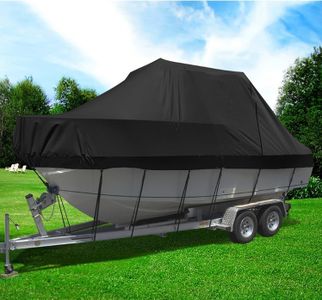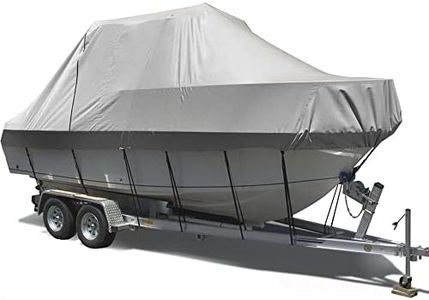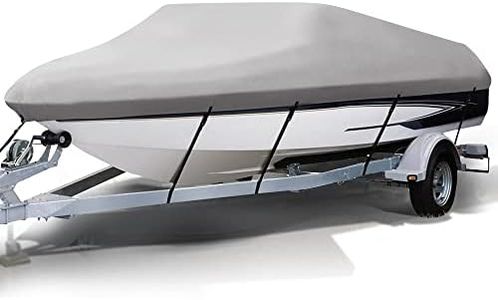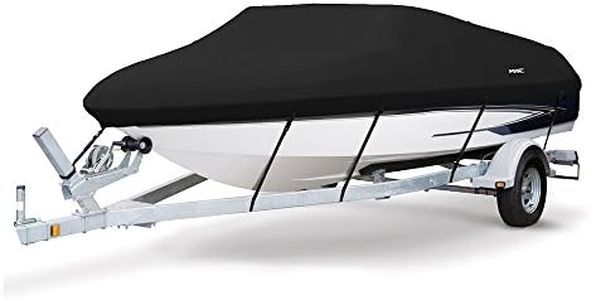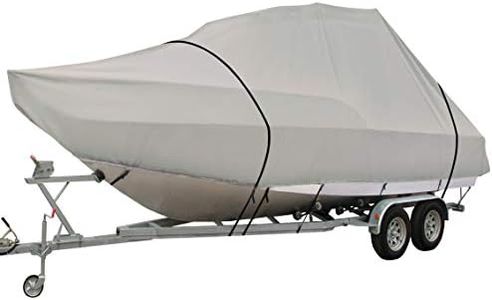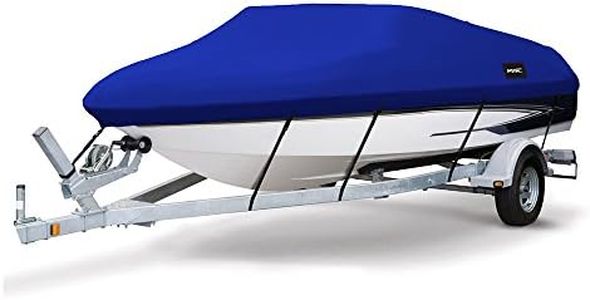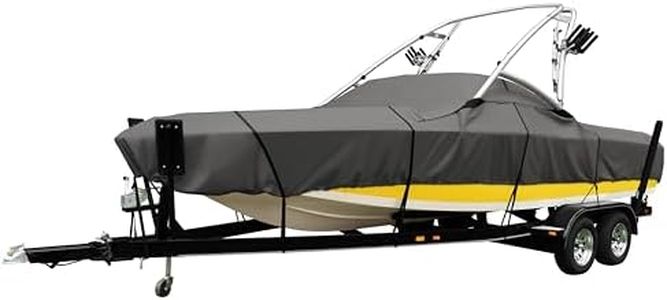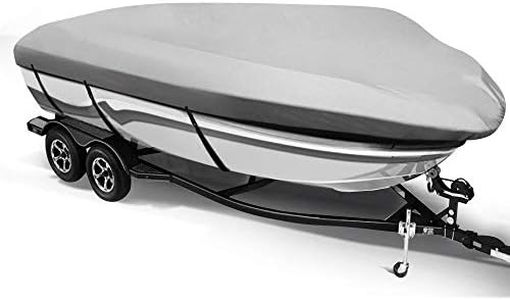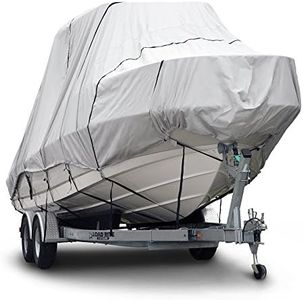We Use CookiesWe use cookies to enhance the security, performance,
functionality and for analytical and promotional activities. By continuing to browse this site you
are agreeing to our privacy policy
10 Best Boat Covers
From leading brands and best sellers available on the web.Buying Guide for the Best Boat Covers
Choosing the right boat cover is essential for protecting your boat from weather, debris, and sun damage when it’s not in use. A good boat cover will extend the life of your boat's interior and exterior and save you from costly repairs. To find the best fit, you’ll need to consider multiple aspects specific to your boat and how and where you store it. Here’s what you need to pay attention to when shopping for boat covers.MaterialMaterial refers to what the boat cover is made from, and it’s critical because it affects durability, water resistance, UV protection, and breathability. Common materials include polyester, canvas, and vinyl. Polyester is usually lightweight, resists UV rays well, and dries quickly. Canvas tends to be thicker and very durable, ideal for more rugged use but heavier and less quick-drying. Vinyl often offers superior waterproofing but can be heavier and less breathable. If you store your boat outdoors, prioritize UV and weather resistance; for indoor storage, lighter options may suffice. Always match the material to your climate and boat storage style.
Size and FitThe size and fit of a boat cover make a big difference in how well it protects your boat. Boat covers often come in different lengths and beam (width) ranges. Universal fit covers work for a wide variety of boat shapes and sizes but may not fit perfectly, while semi-custom and custom-fit covers are made for specific types and shapes of boats, ensuring a snug fit and better protection. To choose the right size, measure your boat’s length and beam carefully and compare it to the manufacturer’s sizing guide. A cover that fits too loosely can lead to flapping in the wind and potential damage, while one too tight might tear or be hard to put on.
Waterproofing and Water ResistanceWaterproofing refers to the cover’s ability to keep water out, while water resistance means it can handle some moisture but may let water seep through in heavy rain. This is important because water pooling on your boat can lead to mildew, rot, or rust. If your boat is stored outside or exposed to the elements, look for covers labeled as fully waterproof and that have features like taped seams or double stitching for extra protection. For indoor or covered storage, water resistance may be sufficient. Always consider the typical weather in your area.
UV ProtectionUV protection indicates how well the cover shields your boat from sunlight. Prolonged exposure to the sun can cause fading and damage finishes and upholstery. Good UV protection is essential, especially if your boat will be stored outdoors in sunny areas. Covers with UV-resistant coatings or treatments will last longer and provide better protection, preserving your boat’s appearance. If your storage is shaded or indoors, this may be less of a concern.
BreathabilityBreathability refers to how well air can flow through the cover, preventing moisture buildup underneath. Non-breathable covers can trap moisture, leading to mold and mildew problems. Breathable materials or covers with built-in vents are ideal for humid or wet environments, or if you often put the cover on a boat that isn’t completely dry. If your main concern is water getting inside, balance the need for moisture protection with breathability.
Attachment SystemThe attachment system includes all the features that keep the cover securely fastened to your boat, like straps, elastic hems, buckles, and drawcords. This is important for ensuring the cover stays on during windy weather and keeps out animals or debris. Some covers use simple elastic edges for quick and easy installation, while others offer straps and buckles for a more secure fit. If you plan to trailer your boat while it’s covered, look for trailerable covers with robust strap systems. For stationary storage, something easier to put on and remove may be more convenient.
